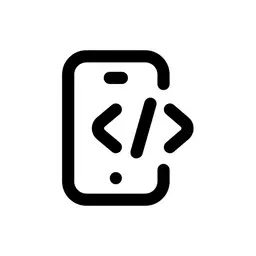What is an app builder?
An app builder is a software platform that allows users to create applications for mobile devices, desktops, or the web without extensive programming knowledge.
App builders typically offer drag-and-drop interfaces, pre-built templates, and customizable components, enabling users to design, test, and deploy apps quickly.
They are used by individuals, businesses, and developers to create apps for various purposes, such as e-commerce, productivity, entertainment, and workflow automation.
What is the difference between no-code and low-code app builders?
The key difference between no-code and low-code app builders lies in the level of coding required:
- No-Code App Builders: Designed for non-technical users, these platforms allow app creation without any coding. They rely entirely on visual tools, templates, and drag-and-drop components.
- Low-Code App Builders: These platforms cater to both technical and non-technical users by combining visual tools with the ability to add custom code for more advanced functionality. Low-code platforms are ideal for creating more complex and scalable applications.
Are app builders good for beginners with no coding experience?
Yes, app builders—particularly no-code app builders—are highly suitable for beginners. They are designed to simplify the development process with intuitive interfaces, visual editors, and pre-built elements that eliminate the need for programming knowledge. These platforms often include tutorials, templates, and support resources to help beginners create functional apps efficiently.
What are the benefits of using a no-code app builder?
AI art tools are software applications that utilize artificial intelligence algorithms to generate, modify, or enhance visual artworks. They can create images from text prompts, apply artistic styles to photos, and assist in various creative processes.
Can no-code app builders handle complex logic and workflows?
AI art generators typically employ machine learning models trained on vast datasets of images and text. By analyzing patterns and features within this data, they can produce new images based on user inputs, such as descriptive text or reference images.
How much does it cost to use an app builder?
The cost of using an app builder varies depending on the platform and features offered:
- Free Plans: Many app builders offer free plans with basic features, suitable for small projects or testing.
- Subscription Plans: Paid plans typically range from $10 to $100+ per month and include more advanced features like custom branding, integrations, and higher storage or usage limits.
- Enterprise Pricing: For large-scale applications, custom enterprise plans may be offered, with pricing based on specific needs.
Users should evaluate their project requirements to choose a plan that fits their budget and goals.
What types of apps can I create with an app builder?
App builders support the creation of various types of applications, including:
- Mobile Apps: For iOS and Android devices, such as social networking, fitness, or e-commerce apps.
- Web Apps: Browser-based applications for business tools, customer portals, or content management systems.
- Business Apps: Workflow automation, project management, and customer relationship management (CRM) tools.
- E-commerce Apps: Online stores or shopping apps with payment processing.
- Custom Apps: Tailored solutions for unique business or personal needs.
The versatility of app builders makes them suitable for a wide range of industries and use cases.
What is a drag-and-drop app builder?
The copyright status of AI-generated art varies by jurisdiction. In some regions, works created solely by AI may not qualify for copyright protection, while human involvement in the creative process can influence eligibility.
How do WYSIWYG app builders work?
While some AI art tools, especially those running locally like Stable Diffusion, may require robust hardware, many are cloud-based and can be accessed via standard web browsers without specialized equipment.
How do low-code platforms handle security and data protection?
Low-code platforms handle security and data protection through a combination of built-in features and customizable options, including:
- Data Encryption: Ensures secure data transfer and storage using encryption protocols like TLS and AES.
- Authentication and Access Controls: Supports multi-factor authentication, role-based permissions, and secure API access to limit data exposure.
- Compliance: Many platforms adhere to industry standards like GDPR, HIPAA, or ISO 27001 for secure data handling.
- Monitoring and Auditing: Includes tools for activity tracking, logging, and security audits to detect and respond to threats.
Advanced users can integrate additional security measures, such as custom code or third-party tools, to enhance protection for specific needs.
How do no-code app builders ensure data security?
No-code app builders ensure data security by providing pre-configured features that prioritize safe data management, including:
- Secure Hosting: Apps are hosted on secure cloud environments with encryption and regular updates to address vulnerabilities.
- User Authentication: Many platforms include built-in authentication methods, such as login systems, role-based access controls, and single sign-on (SSO).
- Pre-Built Compliance: Platforms designed for industries like healthcare or finance often include compliance features for HIPAA, GDPR, or PCI-DSS.
- Minimal Data Access: No-code tools typically restrict direct database access, reducing the risk of data exposure or misuse.
While these features provide a strong foundation, users should be aware of limitations and ensure their app configuration adheres to security best practices.
What are the limitations of no-code app builders?
No-code app builders have several limitations, including:
- Scalability: No-code platforms may struggle with handling high-traffic or complex, large-scale applications.
- Customization: Limited flexibility for advanced functionality, as users are confined to the features and integrations provided by the platform.
- Vendor Lock-In: Apps are often tied to the builder’s ecosystem, making it difficult to migrate or export code to another platform.
- Performance: Apps created with no-code tools may not match the performance of those built with custom coding, especially for resource-intensive tasks.
- Security Control: Users have less control over security configurations compared to traditional development, relying on the platform’s built-in measures.
